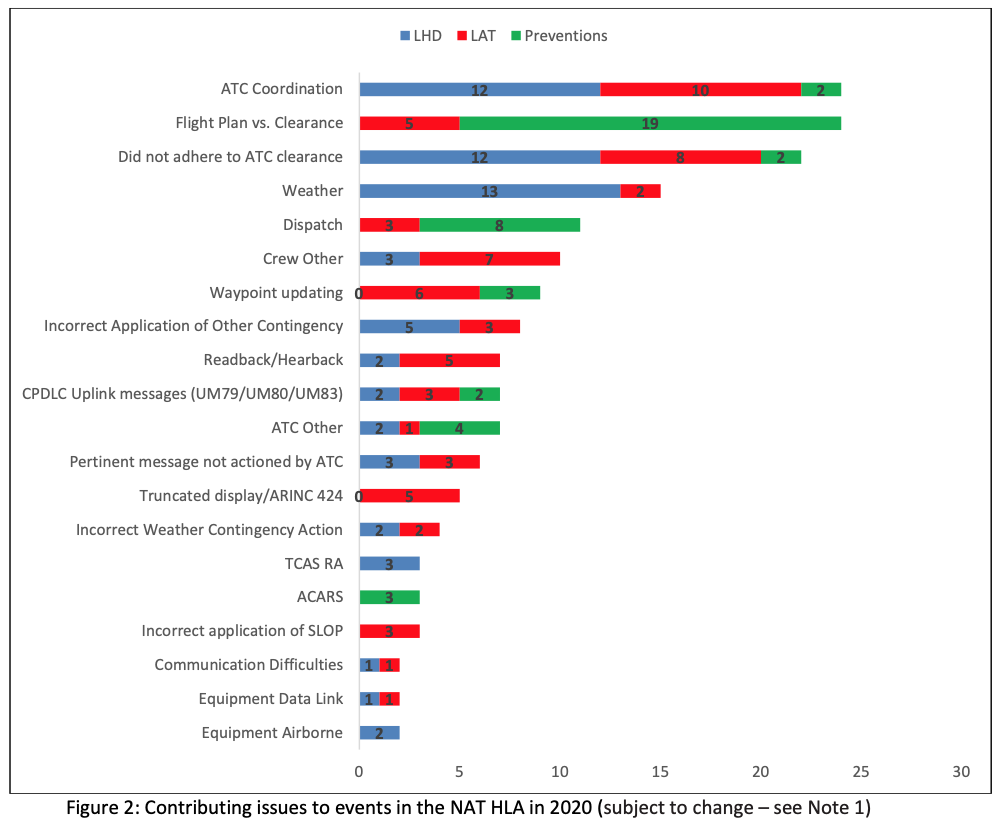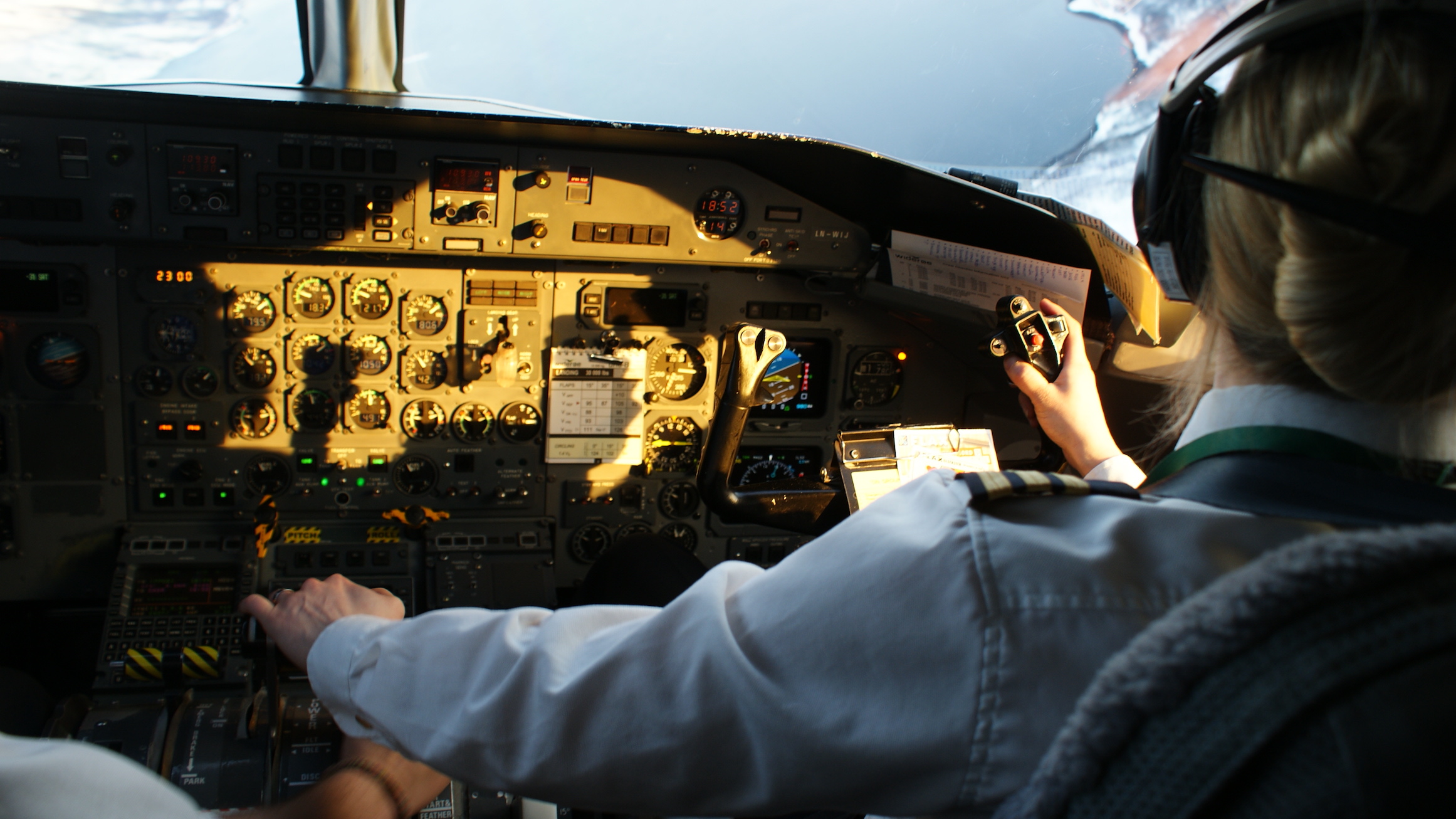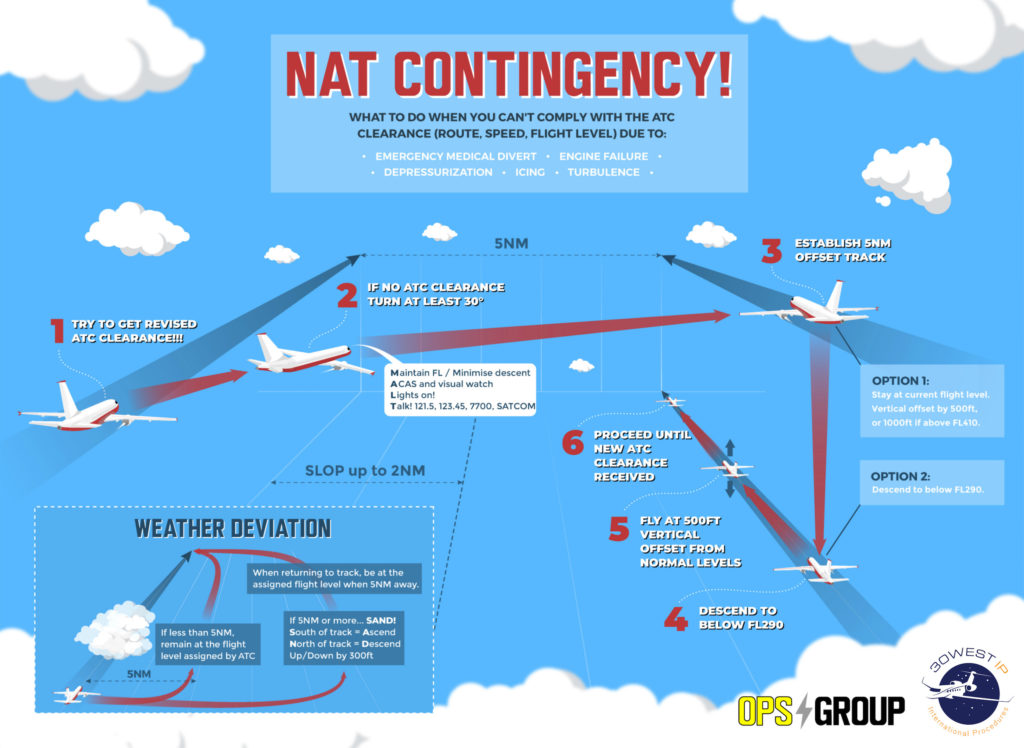The eighth Annual Safety Report for the North Atlantic Region is out, and it looks good. A solid B+ for pilots and ATC alike.
But there is still room for performance improvement, so here are the highlights from the report to focus on.
Did anyone fly in 2020?
The number of flight hours in the NAT HLA through 2020 was 892,137 which was unsurprisingly a decrease on the 2019 hours (2,063,908 in case you’re wondering).
The peak week was July 15-21 when it saw 5,621 flights crossing, compared to 13,733 for the peak week of 2019.
If you want to check and compare all the stats to 2019 then here is our post on that.
What have they been monitoring?
Safety Performance in the NAT HLA is monitored and measured in 12 areas. The targets for 6 of these were achieved in 2019, while 2020 achieved an impressive 8.
The biggest improvements seem to be:
- Less Large Height Deviations where Datalink was not in use
- A reduction in the amount of time aircraft with datalink spent at the wrong flight level
- A reduction in the number of GNE events involving aircraft with datalink
How likely are you to fly into someone else?
Much of the safety focus in the NAT really boils down to this – it is an area of reduced separation and high density traffic. So, they also worked out the risk of collision and in 2020 it reduced by 74%, which is probably down to less aircraft but also to less mess-ups.
SLOP is one of the main factors in reducing this number. And it doesn’t just reduce the risk of collision, it reduces your risk of running into wake turbulence as well. So keep up that slopping, up to 2nm right (and 0.1nm increments).
Who’s to blame for the times it did go wrong?
Ok, ok, the purpose of the report is not to point fingers, but to understand where improvements can be made.
The Top 10 factors in errors haven’t really changed – ATC coordination errors are top, closely followed by “crew other” (which pretty much means crew not doing what they’re told, messing up etc) and then interestingly application of contingency (other than weather).
So here is a quick recap on those Contingency Procedures to follow
Some facts and figures
Since 2019, 70% of core NAT traffic has been using ADS-B.
There have been no accidents in the NAT since at least 2017. 2020 also saw no losses of lateral separation for the first time since 2017.
They did see 47 LHDs, 57 Lateral Deviations (15 were GNEs, the other 13 were caught and corrected by ATC), 26 coordination events, 1 longitudinal loss of separation and 30 events they prevented where someone was basically just flying the wrong flight profile.
18% of events were down to ATC coordination between different ATC sectors.
18% also came down to fight plan versus clearance issues.
11% were weather related.
Issues with dispatch contributed another 8% and everything else was down to, well, lots of other things.

How can we improve?
Follow the Golden Rules of operating in the NAT HLA:
- Have the Right Equipment: If you ain’t sure then check out our Circle of Entry.
- Have a Clearance: If you can’t get it on CPDLC then have those HF or VHF frequencies ready for a voice clearance, and make sure you read it back and confirm it correctly.
- Check your Route: This means flying what you’ve actually been told to fly which means checking what is in the airplane box matches what is in the clearance. It probably should say ‘flight profile’ because it means route, altitude and speed.
- Know your Contingencies: We added the picture above to help. Read more about this here.
And don’t forget to SLOP.
Keep up to date on NAT info
- Here is your link to the full report for 2020.
- ICAO Doc 007 is your go to guide.
- We also try to keep you up to date with changes on the NAT. See our latest update here from Feb 2021.
Photo @Algkalv from Wikimedia Commons
More on the topic:
- More: What’s Changing on the North Atlantic
- More: Timeline of North Atlantic Changes
- More: Blue Spruce Routes Are Gone (But You Can Still Fly Them)
- More: Updated FAA Oceanic Guides
- More: NAT Airspace Closures: Formidable Shield 2025
More reading:
- Latest: Mexico Customs Surprises: Pills, Vapes, and Laptop Rules
- Latest: Greenland NAT Alternates: Dec 2025 Update
- Latest: Crossing the Quiet South: From Australia to Argentina
- Safe Airspace: Risk Database
- Weekly Ops Bulletin: Subscribe
- Membership plans: Why join OPSGROUP?












 Get the famous weekly
Get the famous weekly 





